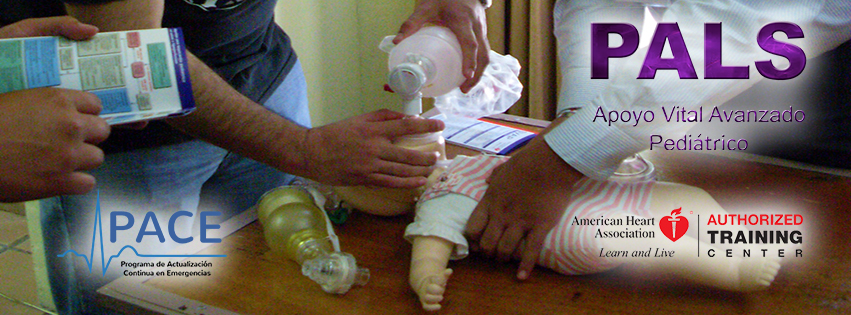(PALS) Pediatric Advanced Life Support
What is?
Pediatric Advanced Life Support (PALS) is a classroom, video-based, Instructor-led course that uses a series of simulated pediatric emergencies to reinforce the important concepts of a systematic approach to pediatric assessment, basic life support, PALS treatment algorithms, effective resuscitation and team dynamics. The goal of the PALS Course is to improve the quality of care provided to seriously ill or injured children, resulting in improved outcomes.
Target of this course
What are the elements of this course?
- Full course: 14 hours 10 minutes, plus additional time for breaks and lunch.
- Update course, with all optional stations: 8 hours 20 minutes, plus additional time for breaks and lunch.
- Update without optional stations: 6 hours 20 minutes, plus additional time for breaks and lunch.
Objectives of this course
After participating in this activity, participants will be able to:
1. Describe the timely recognition and interventions required to prevent respiratory and cardiac arrest in any pediatric patient.
2. Describe the systematic approach to pediatric evaluation by using the initial impression, primary and secondary assessments, and diagnostic tests.
3. Describe priorities and specific interventions for infants and children with respiratory and/or circulatory emergencies.
4. Explain the importance of effective team dynamics during a pediatric resuscitation.
5. Describe the key elements of post-resuscitation management.
6. Perform high-quality CPR.
7. Perform effective respiratory management within your scope of practice.
8. Select and apply appropriate cardiorespiratory monitoring.
9. Select and administer appropriate medications and electrical therapies when presented with arrhythmia scenario.
10. Establish rapid vascular access to administer fluid medications.
11. Demonstrate effective communication and team dynamics both as a team member and as a team leader.
Table of contents
- 1- and 2-rescuer child CPR and AED use
- 1- and 2-rescuer infant CPR
- Cardiac, respiratory and shock case discussions and simulations
- Key changes in pediatric advanced life support, reflecting the new science from the 2010 American Heart Association Guidelines for Cardiopulmonary Resuscitation and Emergency Cardiovascular Care
- Management of respiratory emergencies
- Resuscitation team concept
- Rhythm disturbances and electrical therapy
- Systematic Approach to Pediatric Assessment
Vascular access


